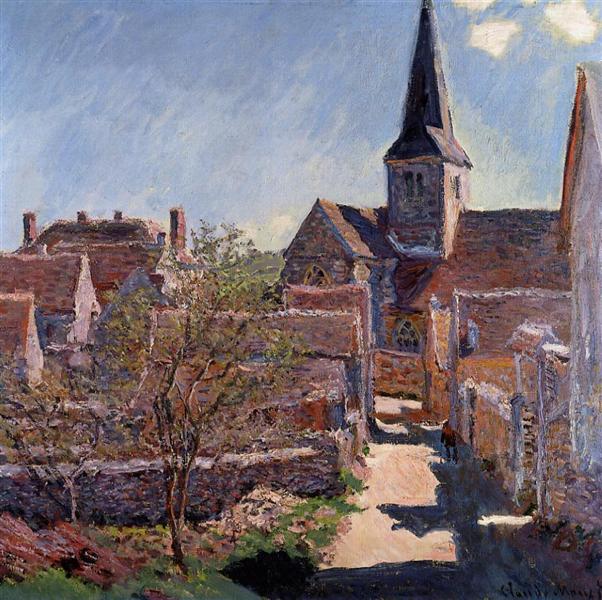Description
Claude Monet's "Bennecourt" work, painted in 1885, is a splendid example of the artist's mastery in the representation of light and color, as well as its unwavering commitment to nature. In this painting, Monet captures an emblematic landscape of his time, the environment of Sena in Bennecourt, where he spent many creative moments and became a source of inspiration for his work.
The "Bennecourt" composition is remarkable for its horizontal structure, which suggests the calm and serenity of the landscape. The foreground presents a brilliant green field that extends to the bottom, where the soft lines of the horizon are subtly blurred with the presence of water, trees and clouds. Monet balances the space through an effective use of the elements that creates a visual continuity, encouraging the viewer to explore every corner of the work.
A color analysis reveals the vibrant and nuanced palette that characterizes Monet's work. The sunlight reverbera on the scene, illuminating the landscape with fresh and luminous tones. The predominant greens contrast with blue and white in the sky, where the clouds float in a soft branch, contributing dynamism to the scene. This use of light and color not only captures the atmosphere of a specific moment over time, but also establishes a dialogue between natural elements.
Unlike some of his most populated and theme works, "Bennecourt" presents a low human presence. The lack of characters in the foreground allows the landscape to speak by itself, underlining the intimate connection between man and nature that is so significant for impressionism. When observing the water of the Seine, you can discern the "loose brushstrokes" technique that Monet uses to give life to the surface of the water and reflect the image of the landscape on its surface. This way of representing the light reflects the evolution of impressionism towards the capture of the moment, suggesting a sense of movement and efficiency.
It is interesting to consider the context in which Monet painted this work. 1885 was a year in which impressionism gained prominence and acceptance, although he still faced criticism. At a time when the representation of the natural landscape becomes a vehicle of artistic expression, Monet is positioned at the forefront of this movement, proposing a subjective and experimental vision of reality. "Bennecourt" is not just a landscape; It is a meditation on the environment that surrounds the artist, about the light that transforms the everyday into something sublime.
This work can be related to other paintings of Monet that also address the theme of the landscape, particularly those that focus on nature along the Seine River. The importance that Monet gives to these natural scenarios resonates in his work "Breakfast on the grass" and in his famous series over the water lilies, where water and light also play central roles. Monet's ability to capture the changing essence of the landscape and its relationship with light becomes a legacy that influenced generations of later artists.
In summary, "Bennecourt - 1885" is a sublime representation of the impressionist approach that Monet perfected throughout his career. Through its treatment of color, light and composition, the artist offers a window to a time in time, an invitation to appreciate the ephemeral beauty of nature. The painting not only highlights Monet's technical ability, but, in turn, encapsulates the spirit of an era that increasingly valued perception and individual experience in the interpretation of the world.
KUADROS ©, a famous paint on your wall.
Hand-made oil painting reproductions, with the quality of professional artists and the distinctive seal of KUADROS ©.
Reproduction service paintings With a guarantee of satisfaction. If you are not completely satisfied with the replica of your painting, we refund your money 100%.

